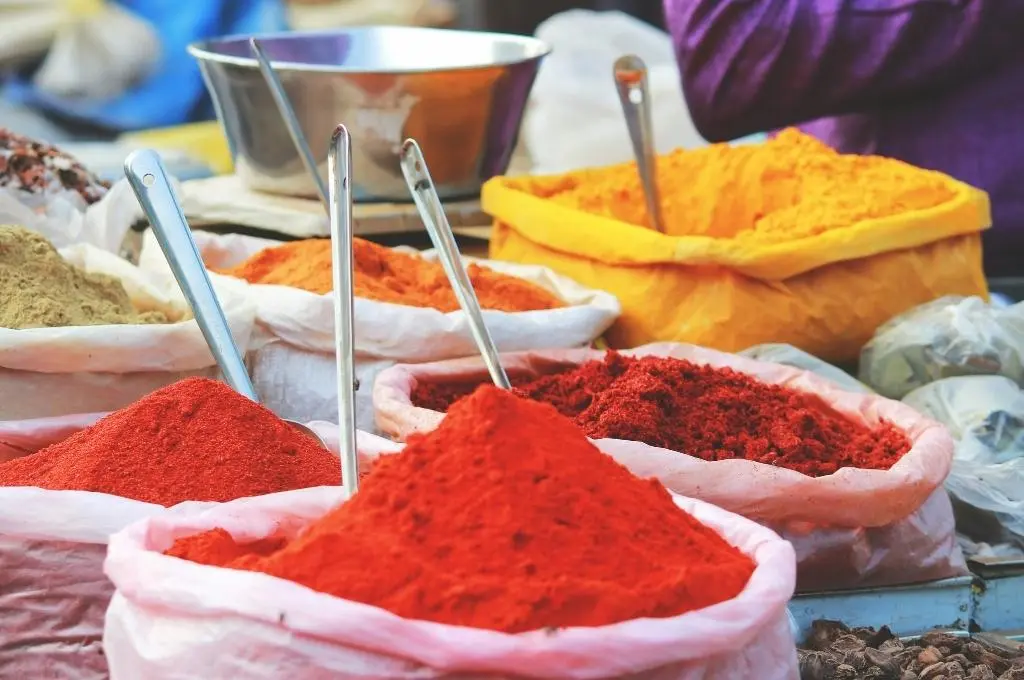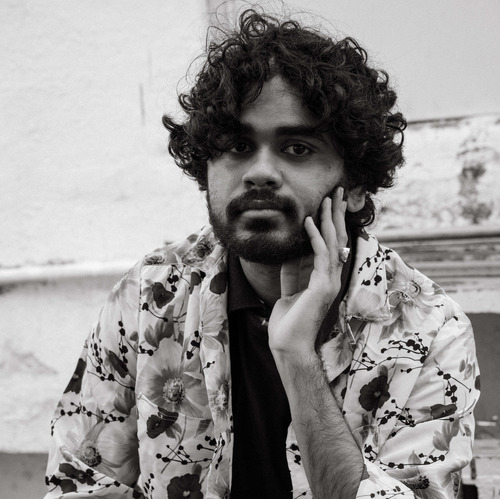વિકલાંગ વ્યક્તિઓને જે અનેક પડકારોનો સામનો કરવો પડે છે તેમાંના કેટલાક છે: સામાજિક કલંક, ભેદભાવ, દસ્તાવેજીકરણમાં ભૂલો અને નોકરીની તકો, આરોગ્યસંભાળના લાભો અને શિક્ષણની પહોંચનો અભાવ. પાયાના સ્તરે આ સમસ્યાઓ વિકલાંગતા સંબંધિત ખોટી સામાજિક માન્યતાઓ અને મૂળભૂત સેવાઓની મર્યાદિત પહોંચને કારણે વધુ જટિલ બને છે, પરિણામે વિકલાંગ વ્યક્તિઓ અને તેમના પરિવારો એકલા પડી જાય છે. તેથી તેમની જરૂરિયાતોને સંબોધિત કરવી, તેમના અધિકારોને માન્ય રાખવા અને સમાવેશકતાને પ્રોત્સાહન આપવું જરૂરી છે.
રાજસ્થાનના કરૌલી જિલ્લામાં યુથ4જોબ્સ ફાઉન્ડેશનના પ્રોગ્રામ મેનેજર મોહમ્મદ શાહેદ કહે છે, “કોઈ વિકલાંગ વ્યક્તિને નોકરી મળે છે ત્યારે માનસિકતામાં પરિવર્તનની સાંકળની શરૂઆત થાય છે – પહેલા કૌટુંબિક સ્તરે અને અંતે ગામ અને બ્લોક સ્તરે. પરિવારો ઘણીવાર તેમના બાળકની સંભાળ કેવી રીતે રાખવી એ અંગે ચિંતિત હોય છે કારણ કે તબીબી બિલો, ખર્ચાળ સહાયક તકનીક અને મદદનો અભાવ તેમના સંસાધનો પર તણાવ ઊભો કરી શકે છે. જોકે, આવકનો સ્ત્રોત અપંગ વ્યક્તિને નોકરીમાં રાખી ન શકાય અને તેને નોકરી આપવી ન જોઈએ એ માન્યતાને બદલી નાખે છે.”
યુથ4જોબ્સ વિકલાંગ વ્યક્તિઓના શિક્ષણ અને રોજગાર પર ધ્યાન કેન્દ્રિત કરીને તેમની સ્વાયત્તતાને પ્રોત્સાહન આપવાનો પ્રયાસ કરે છે. હાલમાં તેમનો ગ્રાસરૂટ એકેડેમી કાર્યક્રમ ખાસ કરીને ગ્રામીણ ભારતમાં શારીરિક, જોવા, સાંભળવા અને બોલવા સંબંધિત વિકલાંગતા ધરાવતા યુવાનોને મદદરૂપ થાય છે. આ સંસ્થાના કાર્યના મુખ્ય ક્ષેત્રોમાં દસ્તાવેજીકરણ સહાય, આર્થિક સશક્તિકરણ અને નેતૃત્વ નિર્માણનો સમાવેશ થાય છે.

યુથ4જોબ્સ ટીમના સભ્યોએ પોતાના અનુભવના આધારે, પાયાના સ્તરે વિકલાંગ વ્યક્તિઓને જે વિશિષ્ટ પડકારોનો સામનો કરવો પડે છે તેને પહોંચી વળવા સંસ્થાઓ અર્થપૂર્ણ કાર્યક્રમો કેવી રીતે તૈયાર કરી શકે તે અંગેની સમજ આપી.

વિકલાંગો દ્વારા, વિકલાંગો માટે
વિકલાંગતા પ્રત્યેનો ખેરાત અને કલ્યાણ-આધારિત અભિગમ બદલીને, તેનાથી આગળ વધીને કંઈક કરવા માટે સંયુક્ત રાષ્ટ્રે ‘અમારા વિના અમારા વિશે કંઈ નહીં’ નું સૂત્ર અપનાવ્યું. આનો અર્થ એ છે કે અપંગ વ્યક્તિઓને સીધી સમાવિષ્ટ કર્યા પછી અને તેમના સૂચનોને ધ્યાનમાં લીધા પછી જ તેમની જરૂરિયાતો, કલ્યાણ અને અધિકારોને અસર કરતા નિર્ણયો લેવાવા જોઈએ, નીતિઓ ઘડાવી જોઈએ અથવા પગલાં લેવાવા જોઈએ, કારણ કે આ બાબતોને તેમના કરતાં વધુ સારી રીતે બીજું કોઈ સમજી શકતું નથી.
યુથ4જોબ્સના સ્થાપક મીરા શિનોય જણાવે છે કે ગ્રાસરૂટ એકેડેમી કાર્યક્રમ પણ આ જ સિદ્ધાંતનું પાલન કરે છે. “અમે જોયું કે વિકલાંગ યુવાનોને આ કાર્યક્રમનું નેતૃત્વ કરવા માટે સક્ષમ બનાવવાનું શક્ય છે કારણ કે તેમની પાસે તેમના સમુદાય માટે કામ કરવાની તીવ્ર ઇચ્છા અને આકાંક્ષા છે. અમે તેમનું નામ દિવ્યાંગ મિત્ર (વિકલાંગોના મિત્રો) એવું રાખ્યું. આ યુવાનો તેમના ગામના વિકલાંગ વ્યક્તિઓને મદદ કરવા ઉપરાંત તેમના સાથી અને હિમાયતી તરીકેની ભૂમિકા પણ નિભાવે છે. સૂચનો અને ઉકેલો રજૂ કરવા માટે તેઓ શ્રેષ્ઠ છે કારણ કે તેઓ બીજા વિકલાંગોની જીવંત વાસ્તવિકતાઓને સમજે છે.”
દિવ્યાંગ મિત્રની હાજરી દ્રઢ થઈ ગયેલા સામાજિક ધોરણોને પડકારે છે. તેઓ એવા વિસ્તારોમાંથી આવે છે અને એવા વિસ્તારોમાં કામ કરે છે જ્યાં વિકલાંગ વ્યક્તિઓ મોટેભાગે તેમના ઘરોની ચાર દીવાલો વચ્ચે જ રહેતી હોય છે, તેમના શિક્ષણ પાછળ બહુ ઓછું રોકાણ કરવામાં આવતું હોય છે અથવા બિલકુલ રોકાણ કરવામાં આવતું નથી. નજીકની શાળાનો અભાવ, પહોંચ સંબંધિત પડકારો, વિશિષ્ટ શિક્ષકોનો અભાવ, નાગરિક ભાગીદારીથી બાકાત રહેવું વિગેરે જેવા વિવિધ કારણોસર આમ બની શકે છે. એવી પણ માન્યતા છે કે તેઓ કામ કરવા માટે અસમર્થ છે. એક દિવ્યાંગ મિત્ર પ્રહલાદ બેનીવાલ કહે છે, “અમે સતત એવી ટિપ્પણીઓ સાંભળીએ છીએ જે અમારા આત્મવિશ્વાસને અસર કરે છે, જેનાથી અમને પ્રશ્ન થાય છે કે અમે કામ કરવા સક્ષમ છીએ ખરા. પરંતુ આ કાર્યક્રમમાં જોડાયા પછી મને સમજાયું કે અપંગોના અધિકારોની હિમાયત કરવા માટે અમારો અવાજ અત્યંત મહત્ત્વનો છે. મારા ગામની વિકલાંગ વ્યક્તિઓ મારા પર વિશ્વાસ કરે છે અને જ્યારે તેઓ જુએ છે કે હું શું કરી શકું છું ત્યારે તેમને પણ કામ કરવાની પ્રેરણા મળે છે.”
આમ સમુદાયનો અવાજ આ કાર્યક્રમનો પાયો બાંધે છે. છ રાજ્યો અને 25 જિલ્લાઓમાં કાર્યક્રમનું અમલીકરણ કરવાના યુથ4જોબ્સના અનુભવે આ સંસ્થાને વિકલાંગ વ્યક્તિઓ માટે કાર્યક્રમો ડિઝાઇન કરવા માટેના કેટલાક મુખ્ય સિદ્ધાંતો પણ મેળવી આપ્યા છે:

1. જરૂરિયાતોના આધારે કાર્યક્રમની રચના કરો
ઉંમર અને શિક્ષણનું સ્તર વિકલાંગ વ્યક્તિઓની જરૂરિયાતોને સમજવામાં મદદરૂપ થાય છે. ગ્રાસરૂટ્સ એકેડેમી કાર્યક્રમના રાજ્ય સ્તરના વડા મહેતાબ સિંઘ સમજાવે છે, “અમે સૌપ્રથમ કોઈ પણ વિસ્તારમાં કેટલી વિકલાંગ વ્યક્તિઓ છે તે જાણવા માટે માટે ઘેર-ઘેર જઈને સર્વેક્ષણ કરીએ છીએ. જો તેઓ 18 વર્ષથી ઓછી ઉંમરના હોય તો અમે તેમને તેમના શિક્ષણમાં કેવી રીતે મદદ કરી શકીએ તેમ છીએ એ બાબતનું અમે મૂલ્યાંકન કરીએ છીએ, જો જરૂર પડે તો તે વિસ્તારની શાળાઓ સાથે જોડાઈએ છીએ. 18 વર્ષથી વધુ ઉંમરના લોકો માટે, તેમને કયા પ્રકારની વિકલાંગતા છે અને તાલીમ દ્વારા તેઓ કઈ કુશળતા પ્રાપ્ત કરી શકે છે તેના આધારે, અમારું પ્રાથમિક ધ્યાન તેમને રોજગાર અપાવવા પર રહે છે.” ઉચ્ચ શિક્ષણ ધરાવતી વ્યક્તિઓ માટે, ઘણીવાર તેમની શૈક્ષણિક લાયકાત સાથે મેળ ખાતી હોય તેવી ઓફિસની નોકરી મેળવવાની પ્રાથમિકતા હોય છે.
શાહેદ ઉલ્લેખ કરે છે કે લોકોને તેમની રુચિના આધારે સ્વરોજગારની તકો સાથે પણ જોડવામાં આવે છે. આમાં કિરાણાની દુકાનો, ચક્કી (ઘંટી), ફોટોગ્રાફી સ્ટુડિયો, બુટિક વગેરે જેવા નેનો સાહસોનો સમાવેશ થાય છે. આ રીતે તેઓ ઉદ્યોગસાહસિકતાના માર્ગ પર સ્થાપિત થઈ શકે છે, જે સમય જતાં તેમને તેમની આવક વધારવા માટે સક્ષમ બનાવે છે. આ પહેલના ભાગ રૂપે તેમને રોજગારની તકો પ્રદાન કરતી સરકારી યોજનાઓથી પણ પરિચિત કરવામાં આવે છે. મહેતાબ એક લોકોમોટર ડિસેબિલિટી (હલન-ચલન સંબંધિત વિકલાંગતા) ધરાવતી વ્યક્તિનું ઉદાહરણ આપે છે જેને સંસ્થાએ સરકારી યોજના હેઠળ ઈ-રિક્ષા મેળવવામાં મદદ કરી હતી. આ વ્યક્તિએ સ્થિર આવક મેળવવા માટે તે ભાડે આપી હતી.
કાર્યક્રમ દ્વારા ઓફર કરવામાં આવતા કોઈપણ વિકલ્પોમાં કોઈક વ્યક્તિને રસ ન હોય એવું પણ શક્ય છે. આવા કિસ્સાઓમાં તેમને સહાય કરવા માટે વૈકલ્પિક રીતો શોધી કાઢવાનું મહત્વપૂર્ણ છે. મહેતાબ એક ઉદાહરણ આપે છે, “લોકોમોટર ડિસેબિલિટી ધરાવતી એક યુવતીને કાર્યક્રમ હેઠળ આપવામાં આવતી નોકરીઓમાં રસ નહોતો. પરંતુ તેને રમતગમતમાં રસ હતો, તેથી અમે સ્થાનિક એથ્લેટિક્સ ટીમનો સંપર્ક કર્યો. આખરે તે રાજ્ય સ્તરની પેરાલિમ્પિક ટીમમાં જોડાવામાં સફળ રહી અને ઘણા પુરસ્કારો જીત્યા.”
2. સરકારી યોજનાઓ અને વહીવટ સાથે જોડાઓ
રોજગાર અથવા શિક્ષણ ઉપરાંત સરકારી યોજનાઓ વિશે માહિતી પૂરી પાડવાથી અને વ્યક્તિઓને તે યોજનાઓની પહોંચ સુલભ બનાવવાથી પણ યુથ4જોબ્સને સમુદાયનો વિશ્વાસ હાંસલ કરવામાં મદદ મળે છે. ઘણીવાર તેમના આધાર કાર્ડ, પેન કાર્ડ અથવા અન્ય સરકારી દસ્તાવેજોમાં તેમનું નામ, સરનામું, પિતા કે પતિનું નામ અને જન્મ તારીખ જેવી માહિતી ખોટી રીતે નોંધાયેલી હોય છે. તેમને લિંક્ડ મોબાઇલ નંબર અથવા ઇમેઇલ આઈડી સુધારવામાં પણ સમસ્યાઓનો સામનો કરવો પડી શકે છે. શાહેદ કહે છે કે તેમનો અનુ ભવ કહે છે કે ઘણા લોકો યુનિક ડિસેબિલિટી આઈડી (યુડીઆઈડી) કાર્ડ અથવા ડિસેબિલિટી સર્ટિફિકેટથી અજાણ હોય છે, સરકારી યોજનાઓના લાભો મેળવવા માટે તે મહત્વપૂર્ણ છે. યુડીઆઈડી મેળવવા માટેની પ્રક્રિયાના ડિજિટાઇઝેશનથી વિકલાંગ વ્યક્તિઓ માટે જટિલતાનું બીજું સ્તર ઉમેરાયું છે. “અમે લોકોને આ અને બીજી સરકારી યોજનાઓ વિશે માહિતગાર કરીએ છીએ અને તેમના દસ્તાવેજોને વ્યવસ્થિત કરવામાં મદદ કરીએ છીએ. અમે વ્યક્તિ અને પરિવારના સભ્ય સાથે જે તે કેન્દ્રમાં જઈને તેમને પ્રક્રિયા અંગે માર્ગદર્શન આપીએ છીએ જેથી ભવિષ્યમાં તેમને કોઈ સમસ્યાનો સામનો ન કરવો પડે.”
ફિલ્ડ ટીમે આશા, આંગણવાડી કાર્યકરો અને સ્થાનિક આરોગ્ય કાર્યકરો ઉપરાંત જિલ્લા, બ્લોક અને પંચાયત અધિકારીઓ જેવા જનપ્રતિનિધિઓ સાથે પણ વાતચીત કરવી પડે છે. આનાથી તેઓ કોઈપણ વિસ્તારમાં વિકલાંગ વ્યક્તિઓ સુધી પહોંચી શકે છે અને સહાયક ટેકનોલોજી (ઉદાહરણ તરીકે, વ્હીલચેર અને ટેબ્લેટ)નું વિતરણ કરવામાં મદદ કરી શકે છે.
3. હિસ્સેદારોમાં સંવેદનશીલતા કેળવો
વિકલાંગ વ્યક્તિઓ સાથે કામ કરતી ટીમને આ સમુદાયની વિશિષ્ટ સમસ્યાઓ સંબંધિત તાલીમ આપવી જોઈએ જેથી તેઓ વાસ્તવિક પડકારોનો અસરકારક રીતે સામનો કરી શકે. મીરા કહે છે, “તાલીમના પહેલા વર્ષમાં અમે અમને મહત્વપૂર્ણ લાગ્યા હતા એવા મોડ્યુલોનો સમાવેશ કર્યો હતો. પરંતુ ટૂંક સમયમાં અમને સામગ્રીમાં ખામીઓ દેખાવા લાગી. પછીના વર્ષમાં અમે આ સમુદાયના સલાહસૂચનો લીધા અને અમારા ધ્યાનમાં આવેલી જરૂરિયાતોના આધારે નવા તાલીમ મોડ્યુલો વિકસાવ્યા. આજે આ સમુદાયના લોકો સાથે પરામર્શ દ્વારા સમગ્ર સામગ્રીમાં સુધારો કરવામાં આવ્યો છે.” પગારદાર કામ અને દાડિયા મજૂરી વચ્ચેના તફાવત પર સમાવિષ્ટ સામગ્રી એ આનું ઉદાહરણ છે. તેઓએ જેમને તાલીમ આપી તેમાંના ઘણા લોકો પહેલાં ઔપચારિક રીતે નોકરીમાં જોડાયેલા નહોતા અથવા ફક્ત અસંગઠિત ક્ષેત્રમાં કામ કરતા હતા તેથી આ સામગ્રીએ પ્રોવિડન્ટ ફંડ (ભવિષ્ય નિધિ) માટે કપાત, લાભો વગેરે જેવા પાસાઓ સ્પષ્ટ કરવામાં મદદ કરી.
ઓફિસના કામમાં જોડાવા માગતા વિકલાંગ વ્યક્તિઓ માટે, એ વ્યક્તિઓને કંપની સાથે પરિચિત કરાવવાનું અને કંપનીને એ વ્યક્તિઓ પ્રત્યે સંવેદનશીલ બનાવવાનું જરૂરી છે. શાહેદ સમજાવે છે, “અમે જેમની સાથે વિકલાંગ વ્યક્તિઓને જોડીએ છીએ તે નોકરીદાતાઓ સાથે વાત કરીને તેમને આ વ્યક્તિઓ પ્રત્યે સંવેદનશીલ બનાવવા પડે છે. અમે સ્થાનિક બજારનું સતત નિરીક્ષણ કરીએ છીએ અને વર્તમાન અને સંભવિત નોકરીદાતાઓને અમારા કાર્યક્રમો વિશે માહિતગાર કરીએ છીએ.” આમ સંસ્થા વિકલાંગ ઉમેદવાર અને નોકરીદાતા વચ્ચે મધ્યસ્થી તરીકે કાર્ય કરે છે.
પરંતુ ઉમેદવારને નોકરી મળ્યાથી કામ પૂરું થતું નથી. મહેતાબ સમજાવે છે, “અમે સાંભળવાની અને બોલવાની ખામી ધરાવતા એક વ્યક્તિને પેટ્રોલ પંપ પર નોકરી મેળવવામાં મદદ કરી હતી. અમે તેની કામગીરીની સમીક્ષા કરી ત્યારે અમને જાણવા મળ્યું કે બીજા કર્મચારીઓની ફરિયાદ હતી કે તે બપોરના ભોજન દરમિયાન કોઈને જાણ કર્યા વિના બે કલાક માટે ગાયબ થઈ જતો હતો. વધુ પૂછપરછ કરતા અમને જાણવા મળ્યું કે તે આ સમય દરમિયાન પ્રાર્થના કરવા માટે બીજે ક્યાંય જઈ રહ્યો હતો. એકવાર આ સ્પષ્ટતા થઈ ગયા પછી બીજી કોઈ સમસ્યાઓ ઊભી થઈ નહોતી.” કર્મચારીઓને એ જાણવું જરૂરી હતું કે શું ચાલી રહ્યું છે, પરંતુ વિકલાંગ વ્યક્તિની વાતચીત કરવાની રીતથી તેઓ પરિચિત ન હોઈ ગેરસમજ થઈ હતી. આવી ગેરસમજો દૂર કરવી એ સંસ્થાના કામનું એક આવશ્યક પાસું છે.
4. પરિવારોને કાર્યક્રમમાં સામેલ કરો
વિકલાંગ વ્યક્તિઓના પરિવારો ઘણીવાર ચિંતા, પૂર્વગ્રહ અથવા અગાઉના પ્રયાસોની બિનઅસરકારકતા જેવા પરિબળોને કારણે તેમના માટે ઘડાયેલ કાર્યક્રમોથી ડરતા હોય છે. વિકલાંગ મહિલાઓને ઘણીવાર ઘરની બહાર નીકળવા દેવામાં આવતી નથી – ન તો શિક્ષણ માટે કે ન રોજગાર માટે. પ્રહલાદ સમજાવે છે, “માતાપિતા તેમની દીકરીઓ વિશે ચિંતિત હોય છે અને પૂછે છે કે તેમને કોઈ મુશ્કેલીનો સામનો કરવો પડે તો શું થાય. અમે તેમને બીજી વિકલાંગ મહિલાઓ સાથે જોડીએ છીએ અને તેઓ તેમને પોતાના અનુભવો વિષે વાત કરે છે. કેટલાક કિસ્સાઓમાં અમે તેમના પરિવારના બીજા સભ્યને તે જ જગ્યાએ રોજગાર સુરક્ષિત કરવામાં પણ મદદ કરીએ છીએ જેથી તેઓ તેમની સાથે જઈ શકે.”
મહેતાબ નોંધે છે કે ક્યારેક વિકલાંગ મહિલાઓના લગ્ન નાની ઉંમરે થઈ જાય છે. આવા કિસ્સાઓમાં, સંસ્થા મહિલાઓ અને તેમના પતિ બંને માટે એક જ જગ્યાએ રોજગાર પૂરો પાડવાનો રસ્તો શોધે છે.
5. પડકારોનો સામનો કરવા માટે અનુકૂલન સાધો
વિકલાંગ વ્યક્તિઓ માટે ખાસ કરીને પાયાના સ્તરે અને વિવિધ પ્રકારના હિસ્સેદારો સાથે કાર્યક્રમ ચલાવવો પડકારજનક છે. ઉદાહરણ તરીકે, નોકરીદાતાઓને વિકલાંગ વ્યક્તિઓને નોકરી પર રાખવા માટે સમજાવવું મુશ્કેલ બની શકે છે કારણ કે વિકલાંગ વ્યક્તિઓને નોકરી પર રાખવાથી કામ પર નકારાત્મક અસર પડી શકે છે એવો એક પૂર્વગ્રહ છે. મીરા જણાવે છે કે આ પડકારનો ઉકેલ સમુદાય તરફથી જ આવ્યો હતો. “અમારી એક બેઠકમાં એક દિવ્યાંગ મિત્રે કહ્યું કે તેમણે એક સ્થાનિક એન્ટરપ્રાઇઝ માલિકનું તેમના એક વિકલાંગ કર્મચારી માટેનું પ્રશંસાપત્ર રેકોર્ડ કર્યું. ત્યારબાદ તેમણે તે રેકોર્ડિંગ તે વિસ્તારના બીજા સંભવિત નોકરીદાતાઓને બતાવ્યું, એ પછી તેઓને અમારી સાથે ભાગીદારી કરવા માટે વધુ સરળતાથી સમજાવી શકાયા.” બીજા દિવ્યાંગ મિત્રો પણ તેમના સંબંધિત વિસ્તારોમાં આ વ્યૂહરચના લાગુ કરી શક્યા હતા.
વિકલાંગ વ્યક્તિઓ માટે સ્વ-રોજગારનો વિકલ્પ મહત્વપૂર્ણ છે.
સમુદાયો અને સરકારી પ્રતિનિધિઓ વચ્ચે ફળદાયી વાતચીતને સરળ બનાવવાનો પ્રયાસ કરતી વખતે અવરોધો પણ ઊભા થઈ શકે છે. કેટલાક કિસ્સાઓમાં, અધિકારીનો સંપર્ક કરવો એ સમય માંગી લે તેવું કામ હોઈ શકે છે, અને મુલાકાત નકારવામાં આવે એવી સ્પષ્ટ શક્યતાઓ હોય છે. રાજસ્થાનના ભરતપુર જિલ્લામાં એક દિવ્યાંગ મિત્ર અમર સિંહને મુખ્યમંત્રી દિવ્યાંગ સ્કૂટી યોજના હેઠળ વિકલાંગ વ્યક્તિઓ માટે હક મેળવવામાં મુશ્કેલી પડી રહી હતી. ત્યારે તેમણે જિલ્લામાંથી વિકલાંગ વ્યક્તિઓના એક મોટા જૂથને એકત્ર કર્યું હતું અને તેમની જરૂરિયાતો રજૂ કરવા માટે રાજ્યના મુખ્યમંત્રી સાથે બેઠકનું આયોજન કર્યું હતું. આખરે તેઓ 50 સ્કૂટર મેળવવામાં સફળ રહ્યા હતા એટલું જ નહીં પરંતુ રાજસ્થાનમાં અપંગ વ્યક્તિઓ માટેની સલાહકાર સમિતિમાં નામાંકિત પણ થયા હતા.
વ્યક્તિના શિક્ષણના આધારે તેને રોજગારની યોગ્ય તકો મેળવી આપવાનું પણ પડકારરૂપ બની શકે છે. શાહેદ સમજાવે છે, “રોજગારની દ્રષ્ટિએ, ખાસ કરીને ગ્રામીણ વિસ્તારોમાં, વિકલાંગ વ્યક્તિઓમાં શિક્ષણનું સ્તર એક પડકાર છે. ગામડાઓમાં પ્રાથમિક શાળાઓ હોઈ શકે છે, પરંતુ માધ્યમિક શાળાઓ અને યુનિવર્સિટીઓ ઘણીવાર દૂર આવેલી હોય છે, ત્યારે મુસાફરીની દુર્ગમતા એક મહત્વપૂર્ણ અવરોધ બની જાય છે. જો કે નોકરીદાતાઓ સામાન્ય રીતે એવા લોકોને નોકરી પર રાખવા માંગે છે જેમણે ઓછામાં ઓછું 10 મું ધોરણ પાસ કર્યું હોય.” તેથી અપંગ વ્યક્તિઓ માટે સ્વ-રોજગારનો વિકલ્પ મહત્વપૂર્ણ છે. પરંતુ તેમના સ્વ-રોજગારના માધ્યમો એકબીજા સાથે વિરોધાભાસી ન હોય એ સુનિશ્ચિત કરવું પણ મહત્વપૂર્ણ છે કે, જેમ કે એક જ વિસ્તારમાં બે કિરાણાની દુકાનો. આવી સ્પર્ધા રોકવા માટે સમાન દુકાનો એકબીજાથી થોડા અંતરે ખોલવામાં આવે છે. સાથેસાથે દુકાનની પહોંચ અપંગ વ્યક્તિ માટે સુલભ હોય અને ગ્રામજનો પણ ત્યાં સરળતાથી જાય શકે એમ હોય તેનું પણ ધ્યાન રાખવામાં આવે છે.
જે ક્ષેત્રોમાં પહેલેથી જ ઘણું કામ થઈ રહ્યું છે એવા ક્ષેત્રોમાં સંસ્થાઓ રોકાણ ન કરે એ સુનિશ્ચિત કરવાની વાત પર ભાર મૂકતા મીરા કહે છે, “દયાથી પ્રેરાઈને ભંડોળ આપનારાઓ, સરકાર અને આ કામમાં વિશ્વાસ રાખનારા બીજા હિસ્સેદારોને પણ સામેલ કરવા પણ મહત્વપૂર્ણ છે, કારણ કે તે કાર્યક્રમના ટકાઉપણા તરફ દોરી જાય છે.” એ મહત્ત્વનું છે કે તેઓ સમુદાયના અનુભવ પર આધાર રાખવાની ઉપયોગિતા પર ભાર મૂકે છે: “[વિકલાંગ વ્યક્તિઓ સાથે કામ કરતી વખતે] સૌથી મહત્વપૂર્ણ જરૂરિયાત એ વાત સ્પષ્ટપણે સમજી લેવાની છે કે આપણે કર્તા નથી, પરંતુ ફક્ત સુવિધા આપનારા છીએ. વાસ્તવિક પરિવર્તન લાવનારાઓ સમુદાયના વિકલાંગ યુવાનો છે, જેમની ક્ષમતાઓમાં આપણે રોકાણ કરવાની જરૂર છે. અમારા કામ દ્વારા અમે ગ્રામીણ સમુદાયોના ડહાપણનું મૂલ્ય સમજ્યા છીએ. તેમની વાત સાંભળવા માટે, ધ્યાનમાં લેવા માટે, આપણામાં નમ્રતા હોવી જોઈએ.”
આ લેખમાં સિદ્ધાર્થ ભટ્ટનું યોગદાન છે.
ટ્રાન્સલેશન ટૂલનો ઉપયોગ કરીને અંગ્રેજીમાંથી અનુવાદિત કરવામાં આવેલ આ લેખની સમીક્ષા અને તેનું સંપાદન મૈત્રેયી યાજ્ઞિક દ્વારા કરવામાં આવેલ છે અને મીત કાકડિયા દ્વારા તેની પુન: સમીક્ષા કરવામાં આવી છે .
—
વધુ જાણો
- રાજસ્થાનમાં લિંગ સમાનતા અને વિકલાંગોના અધિકારો માટે લડતા કાર્યકર્તાના જીવન વિશે વધુ જાણો.
- ભારતમાં વિકલાંગ વ્યક્તિઓ માટે વધુ સમાવેશક ભવિષ્ય નિર્માણ કરવા અંગે નીતિ ઘડવૈયાઓ સમક્ષ ભલામણો રજૂ કરતું આ શ્વેતપત્ર વાંચો.






